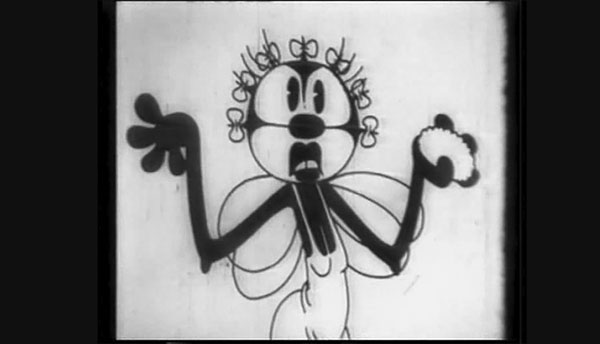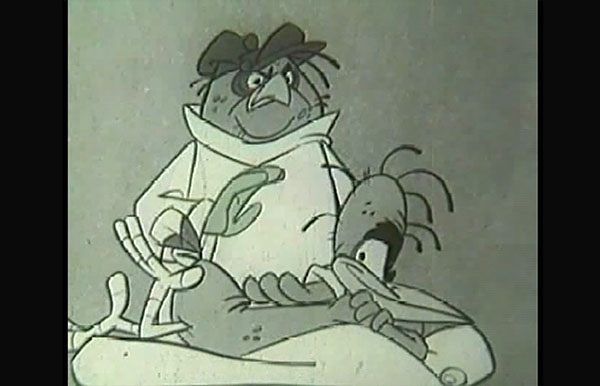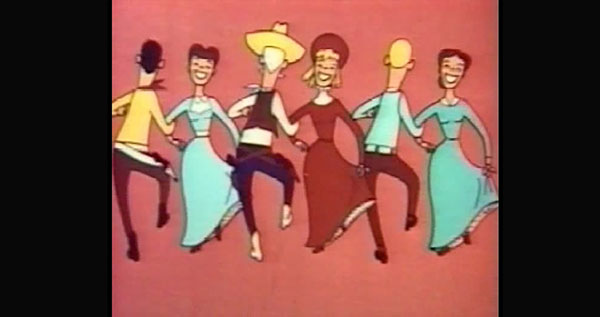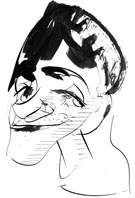
In spite of having an internationally recognized tradition of comics (“historieta” is the local term, and perhaps the most appropriate, for the same reasons that a bande desinée is not exactly a manga), Argentina does not seem to have an equally powerful equivalent in animation. One could argue economic reasons, but it is true that with a publishing industry in retreat, the Argentine historieta continues to be drawn, to the point where it’s now almost an export product. One could argue organizational reasons, because, like cats, artists can be great on their own but it’s trickier to have more than one in the room; and yet, some Argentine animators rank among the sweetest creatures of Creation. To argue budget reasons and the lack of entrepreneurs willing to invest in such an enterprise -even at the times when cinema was still a possible venture- is a little closer to the core of the issue.

But in order to have a recognized tradition of creators we must first have a creator at hand. It may not necessarily be the specific author of the work but just a name to relate it to. This is easy in the case of comics, even when the creators did not own the property of their creatures: Popeye was by Segar and Superman was by Siegel and Shuster. In the case of animation, with its armies of cartoonists and technicians, things are not so simple; Disney multiplied its name wherever he could, and not without good reasons. I suspect that the Argentine animation of the last decades was much more prolific than one might think, and if it didn’t seem so, it was because its efforts were scattered in a multitude of different continents and contents, rarely related to the specific name of its authors. It was in the air and was taken for granted. Its trunk was the great school of animators who devoted themselves to advertising, but the ramifications were often surprising and at times unpredictable. This is the story of just a few cases, which by no means pretends to cover the whole picture.

How to define “commercial animation” in a place where its creators often work on a freelance basis? A broad answer (and not as obvious as it seems, in the Argentine case) is the one that allows its creators and technicians to make a living. That is not to say that some of these creators do not produce animation for their own enjoyment, occasionally touring that strange cult that combines movies and holy pilgrimage in something called Cinema Festivals. But this is for most of them almost a personal weakness. Our “commercial animator” is first and foremost a professional who lives from the production of specific seconds of animation and who has a “client”. That is to say, something like a figure of the past in a planet of youtube solopreneurs.
Luckily these professionals are far from being figures of the past and several are willing to talk about their work. The story they tell serves to begin the arduous task of naming names. Some of them can be related to a certain type of production, or to a specific company, but it should be noted that this linkage is arbitrary. The Argentine animator did a little bit of everything everywhere. That is his strength and perhaps – pardon my predictability – his weakness.

Although in Argentina there were small producers focused on advertising animation such as Juan Oliva, Burone Bruché or the already visited Quirino Cristiani since the big screen, the development of Argentine television in the 50’s generated a variety of studios and professionals that could be considered as a whole new world. The company that started with filmed television advertising was Kinevisión, in 1952, created by Leonardo Goilenberg, who had withdrawn from the Cinepa film production company due to the refusal of the directors to produce material for the new medium. In 1955, cartoonist José Zalnero set up his own advertising studio. Marcos Socio did the same, setting up his Publifilm. In 1956, Marcos Casado Sastre’s production company M. C. Films appeared, whose animation section was in charge of Oscar Desplats. In turn, the Lowe production company extended its scope to television advertising.
Early Argentine TV advertising:
As of 1959, a true explosion of companies was unleashed: Maherlandia (owned by Mario and Eduardo Maher); CITECO SRL (owned by Tiberio Adam and Mauricio Jakab); Producciones Constantini (owned by Carlos Constantini); Producciones Manuel García Ferré, Producciones Lambert (owned by Oscar Desplats and Néstor Córdoba); and Yuyo’s Film (owned by Mario and Aquiles Bertiller). In 1960, came Producciones Csecs (owned by Hugo Csecs), Mepa (where Jorge Martín, better known as Catú, made his appearance) and Avance, owned by Alberto and Enrique del Castillo, Osvaldo García and Matías Domínguez. In 1962, the latter incorporated, among others, Carlos Ceretti and the famous cartoonist Oscar Blotta (from Lowe), thus forming Printer Avance.
Carlos Constantini’s Mac Perro (around 1970):
Not all Argentine animation was limited to Buenos Aires. The director Luis Bras (1923-1995) developed an important career as an advertising animator and author of experimental shorts in Rosario, a city that today has a famous school of animators, directed by Juan Pablo Jaúregui.
TV advertising made in Rosario (likely by Luis Bras):
Some highlights of Argentine animated TV ad should include alcoholic chipmunks:
The hard science of the soccer ball:
For a short time, old people were also a fad:
For the next entry in this series, tomorrow, I will focus on a few names, principally Manuel García Ferré, and, as a privileged witness, one of his star animators: Alberto Grisolía.


 Lucas Nine is an Argentine artist: illustrator, graphic novel author, animator and director of animated films. His work has been awarded several times and published, exhibited and screened in Argentina, Brasil, Mexico, Canada, Spain, Italy, France, Germany, Hungary, Netherlands and Japan. Check out his animation and artwork online:
Lucas Nine is an Argentine artist: illustrator, graphic novel author, animator and director of animated films. His work has been awarded several times and published, exhibited and screened in Argentina, Brasil, Mexico, Canada, Spain, Italy, France, Germany, Hungary, Netherlands and Japan. Check out his animation and artwork online: 








































These Argentine animated commercials are great! My favourite is the groovy Peter Max-style apple ad. “La vida sana tiene gusto a manzana” must be equivalent to the English expression “An apple a day keeps the doctor away.”
“La mosca loca” may have been animated in Rosario, but to me it looks like a cartoon made in New York in 1931.
I wonder if the slow growth of television animation in Argentina might have also had a political factor. Television in Argentina began under the Peron regime, which exercised strict control over all media. Thus anyone who had worked in television under Peron would have been held in suspicion by the military dictatorship that succeeded him. The proliferation of animation studios in 1959 suggests that television had become, or at least was seen as, a more stable environment following the election of Frondizi the year before. Or am I way off base here?
Looking forward to your next instalment!
Yes, you’re in the right track but some details need to be added: Argentine TV started under Perón second term (1952) but a coup d’etat ejected him in 1955, so TV really didn’t have time enough to be developed. As long I know, there was only a public TV broadcast owned by the state by then (while all big argentine cinema productions companies were private enterprises). Peron government exercised pression on the cinema not exactly through direct censorship but through state loans to the private sector. After 1955, TV was open to private investors and new channels appeared. Of course, peronists artists (or any artist identified with peronism) did have troubles to find a job in TV, cinema or radio after 1955. Some of them (as Hugo del Carril) did have troubles before and after 1955. A couple of years after that, things started to be a little more stable, as you guessed. Just a little.
Thank you for that clarification. Argentine political history is very interesting, but also confusing!
I’m writting a message in Spanish with information that does not appear in here. For instance.
The Far West jean commercial was recovered by Raúl Manrupe, the agency that produced it was J. Walter Thompson.
The last two commercials in the bottom are from Carlos Ceretti, who also voiced the two main characters (Leopoldo Costa is the announcer in off in the second one).
Many thanks for the information!
¡Qué gran trabajo de investigación! Enhorabuena, Lucas Nine.
For years on one of the Spanish channels on TV in NYC they ran a Mac Perro segment letting the kiddies know it was time to go to bed, right before the night’s telenovelas were to run. It’s great to now have an animator to put on it.